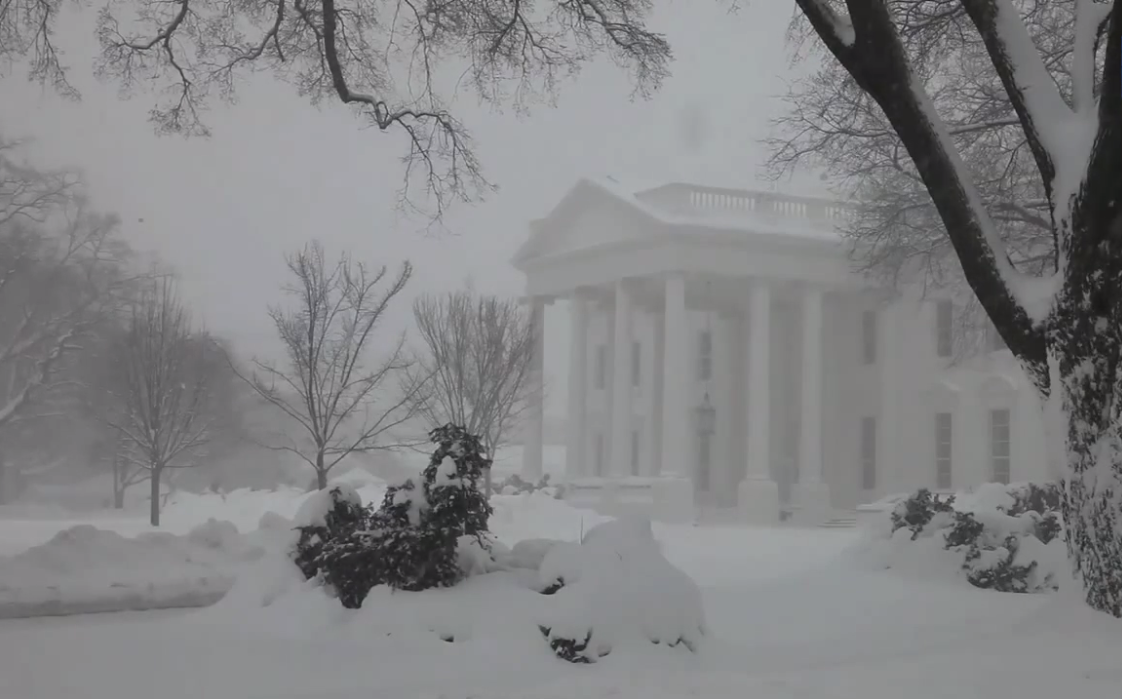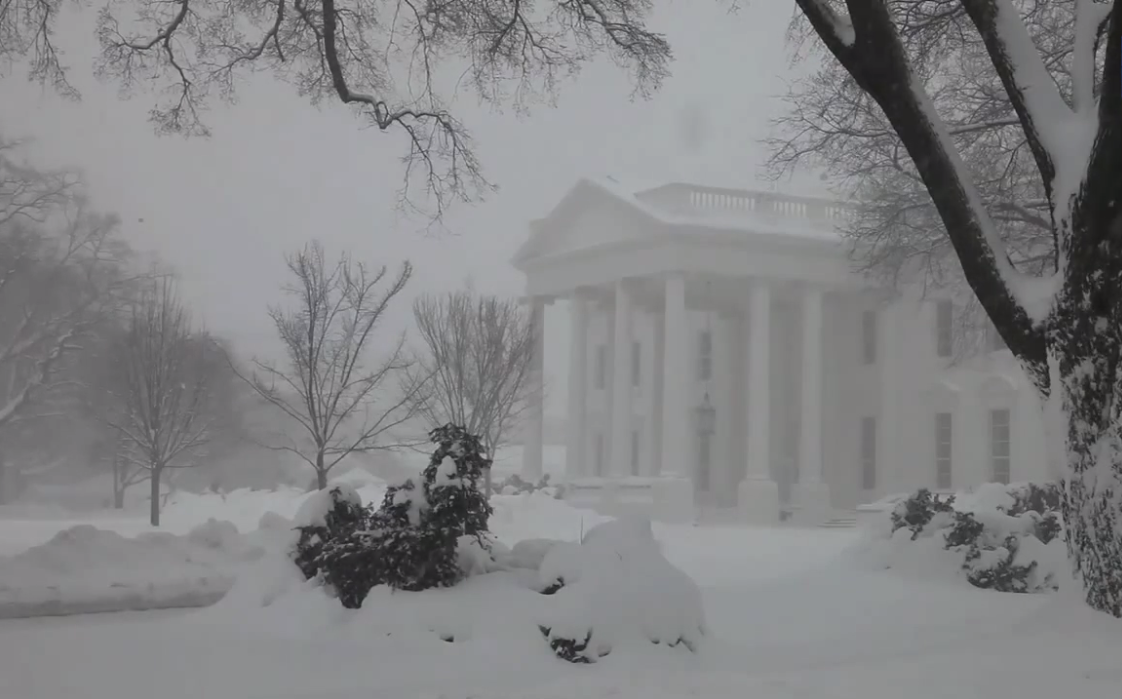Snowmageddon 2015: Why Global Warming Causes Blizzards
Between January 26 and January 28, “Winter Storm Juno,” as it has been dubbed in the media, dumped over 30 inches of snow over 54 locations in six states.


So, technically, “snowmageddon” only ranked 36th in New York City’s list of biggest snowfalls. Still, there’s no denying that the east coast experienced a generous dusting this week, and that has more to do with climate change than you might think.
Between January 26 and January 28, “Winter Storm Juno,” as it has been dubbed in the media, dumped over 30 inches of snow over 54 locations in six states. Coastal areas also experienced high winds and flooding, which is unusual (we’ll get to that in a moment). Worcester, Massachusetts had its heaviest snowstorm on record (34.5 inches) while Boston reported the sixth heaviest snowstorm in its history (24.6 inches).
Insane ice encrusted car from one of our photogs @BOSTONsVideo in Scituate. #Blizzardof2015 pic.twitter.com/iX2aYr9fmV
— Eric Fisher (@ericfisher) January 29, 2015
Some of you out there may have friends, family members, office workers or political representatives who like to use winter weather as “proof” that global warming is a sham. Planet Experts has covered this before. Make no mistake, the planet is definitely getting warmer, but this is why “climate change” and “global warming” are two related but separate phenomena.
If the Globe Is Warming, Why Is There So Much Snow?
First of all, it’s important to note that the east coast of North America is in a unique position relative to the rest of the planet. If you consult recent heat maps, most regions exhibit easily understood red and orange warming spots. New England, however, is bluish-purple due to the heaping helping of Arctic wind coming off the Polar Vortex.
But there is even more going on. The formation of Winter Storm Juno was due to several atmospheric and oceanic factors, starting with the fact that the ocean is much warmer than it used to be.
Ninety percent of the planet’s heat is absorbed by the oceans. In recent years, the oceans have absorbed so much heat that they’ve actually topped out scientists’ temperature charts, and the higher heat content in the north Atlantic is what set Juno on its path.
As cold Arctic air meets warm Atlantic water, a nor’easter forms, and as the storm grows it pulls warm air from the southeast and the Gulf of Mexico. But because the water in all these areas is warmer than it normally is – and the warm water extends 300 feet down – the winds can feed on the heat for longer, rolling Juno into a much bigger storm. As Daily Kos puts it, “This is climate change. This is what happens when Gulf Stream eddies jump northwards past previous limits providing vast amounts of heat to winter storms that derive much of their strength from the ocean’s heat.”
As these Arctic winds pull in heat, they pull in a higher amount of vapor. We know that warmer water evaporates more than cooler water, which creates more vapor, and as that warm humid air rises over the cold Arctic air it condenses into snow. That happens every year. But what we’ve seen in the past few years, and this year, and will continue to see in the future, is a change in how extreme these snows become.
The National Climate Assessment has been studying this intently. The NCA is a team of over 300 experts guided by a 60-member Federal Advisory Committee, and they have produced a report that shows exactly what effect climate change is having on America. “Winter storms have increased in frequency and intensity since the 1950s,” the authors write, “and their tracks have shifted northward over the United States.”
There is proof of this all around us. As I mentioned at the beginning of this article, Juno may only rank as the 36th biggest snowfall in New York’s history but, as Mashable’s Andrew Freedman points out, five of NYC’s top 10 snowfalls happened in the past 15 years. The UN’s Intergovernmental Panel on Climate Change, which has concluded with 95 percent certainty that man-made emissions of greenhouse gases are influencing the climate, has also stated that as the planet warms “extreme precipitation events will become more intense and frequent” in North America.
Snow is indeed precipitation.
Dr. Kevin Trenberth, former head of the Climate Analysis Section at the National Center for Atmospheric Research, has stated that while the snow season is getting shorter, snowfalls are becoming heavier. As he explains,
“In winter it is cold over the continent. But it is warm over the oceans and the contrast between the cold continent and the warm Gulf Stream and surrounding waters is increasing. At present sea surface temperatures are more than 2F above normal over huge expanses (1,000 miles) off the east coast and water vapor in the atmosphere is about 10 percent higher as a result. About half of this can be attributed to climate change.”
It’s Warmer, and That’s Why It’s Snowier
Both NASA and NOAA have confirmed that 2014 was the hottest year on record. Last month was the warmest December on the planet in 135 years.
And because of this extra warmth, we’re also getting complimentary storm surges. “Flooding is going to be a major issue for the Cape and New England,” Bernadette Woods Placky, a meteorologist at Climate Central, told The Guardian. “The way this storm is just bombing out of there – just the intensity it’s creating off the coast – it is going to add even more water and pull it on to shore,” she said. “It is everything interconnecting and exploding all at once.”
That’s why Juno is a symptom of climate change and not an exception. Scientists are saying these types of events will only become more common. The Guardian reports that experts believe 35 percent of the rain that came from Hurricane Sandy was due to the climate change effects discussed above.
So bundle up, folks. It’s going to be a bumpy future. ![]()

